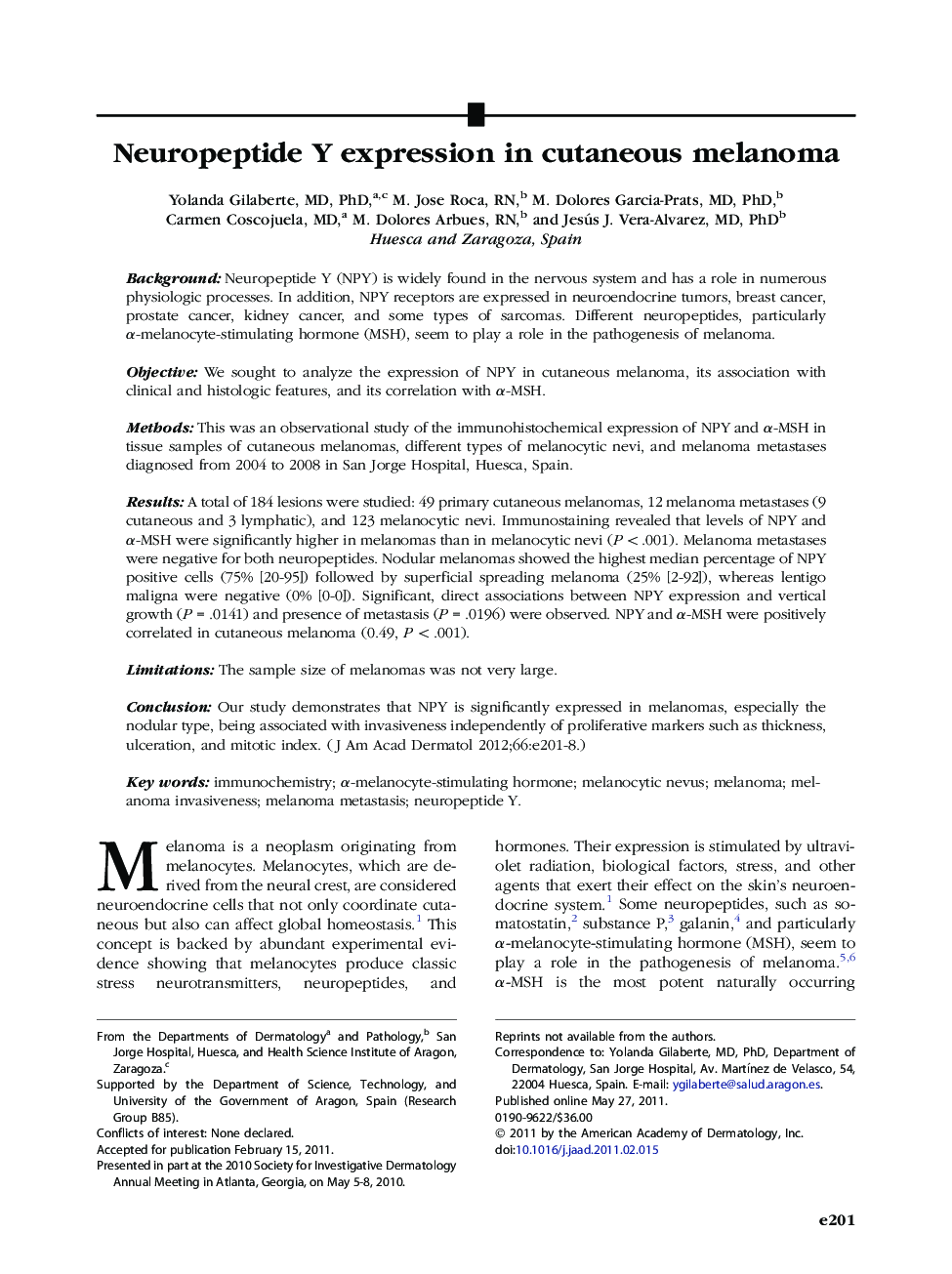| کد مقاله | کد نشریه | سال انتشار | مقاله انگلیسی | نسخه تمام متن |
|---|---|---|---|---|
| 3207032 | 1587564 | 2012 | 8 صفحه PDF | دانلود رایگان |

BackgroundNeuropeptide Y (NPY) is widely found in the nervous system and has a role in numerous physiologic processes. In addition, NPY receptors are expressed in neuroendocrine tumors, breast cancer, prostate cancer, kidney cancer, and some types of sarcomas. Different neuropeptides, particularly α-melanocyte-stimulating hormone (MSH), seem to play a role in the pathogenesis of melanoma.ObjectiveWe sought to analyze the expression of NPY in cutaneous melanoma, its association with clinical and histologic features, and its correlation with α-MSH.MethodsThis was an observational study of the immunohistochemical expression of NPY and α-MSH in tissue samples of cutaneous melanomas, different types of melanocytic nevi, and melanoma metastases diagnosed from 2004 to 2008 in San Jorge Hospital, Huesca, Spain.ResultsA total of 184 lesions were studied: 49 primary cutaneous melanomas, 12 melanoma metastases (9 cutaneous and 3 lymphatic), and 123 melanocytic nevi. Immunostaining revealed that levels of NPY and α-MSH were significantly higher in melanomas than in melanocytic nevi (P < .001). Melanoma metastases were negative for both neuropeptides. Nodular melanomas showed the highest median percentage of NPY positive cells (75% [20-95]) followed by superficial spreading melanoma (25% [2-92]), whereas lentigo maligna were negative (0% [0-0]). Significant, direct associations between NPY expression and vertical growth (P = .0141) and presence of metastasis (P = .0196) were observed. NPY and α-MSH were positively correlated in cutaneous melanoma (0.49, P < .001).LimitationsThe sample size of melanomas was not very large.ConclusionOur study demonstrates that NPY is significantly expressed in melanomas, especially the nodular type, being associated with invasiveness independently of proliferative markers such as thickness, ulceration, and mitotic index.
Journal: Journal of the American Academy of Dermatology - Volume 66, Issue 6, June 2012, Pages e201–e208